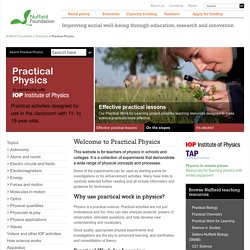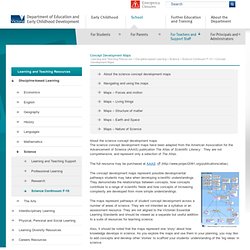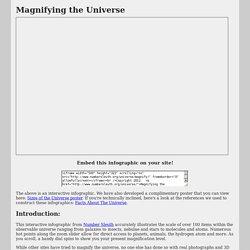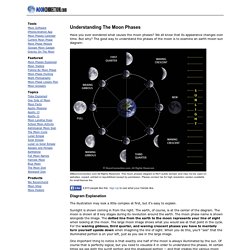

ALEX Lesson Plan: Let's Get SCIENTIFIC with Numbers! Engage Introduce students to various ways very large and very small numbers are used in the world.

For example, how many miles is the Earth from the sun; what is the thickness of a red blood cell; estimate the growth rate of your hair per day; what is the net worth of Bill Gates? Ask students for other examples. Have students enter a large number on their calculators (ex. 36,000,000,000,000) and then press 'enter' or '='. Also, have students use their calculators to find 600,000 X 600,000.
Explore Ask students to test their ideas with different examples. Explain Have students to explain how to write the number 100,000,000 using a shorter way. Extend Have students to take two very large numbers written in scientific notation and multiply them together. Evaluate When you feel that the class has some understanding of the various types of notation, assign LetsGetScientificWorksheet.rtf. Doc Brown (chemistry teacher) GCSE Science Biology Physics HOMEPAGE Revision Notes Quizzes e-learning website free to use online.
Practical Physics. This website is for teachers of physics in schools and colleges.

It is a collection of experiments that demonstrate a wide range of physical concepts and processes. Some of the experiments can be used as starting-points for investigations or for enhancement activities. Many have links to carefully selected further reading and all include information and guidance for technicians. Physics is a practical science. Practical activities are not just motivational and fun: they can also sharpen students’ powers of observation, stimulate questions, and help develop new understanding and vocabulary.
Good quality, appropriate physics experiments and investigations are the key to enhanced learning, and clarification and consolidation of theory. The Physics Hypertextbook. Australian Academy of Science - PrimaryConnections. Advancing excellence in the chemical sciences. Home - ASTA. The Naked Scientists Online, Science Podcast and Science Radio Show. Understanding Science. Australian Academy of Science - PrimaryConnections. NSDL Science Literacy Maps. Concept Development Maps.
<div class='noindex'>You may be trying to access this site from a secured browser on the server.

Please enable scripts and reload this page. </div> Turn on more accessible mode Skip Ribbon Commands Skip to main content Emergency Closures Learning and Teaching Resources Concept Development Maps About the science concept development maps The science concept development maps have been adapted from the American Association for the Advancement of Science (AAAS) publication The Atlas of Scientific Literacy . The full resource may be purchased at AAAS ( The concept development maps represent possible developmental pathways students may take when developing scientific understandings.
The maps represent pathways of student concept development across a number of areas of science. Also, it should be noted that the maps represent one ‘story’ about how knowledge develops in science. The Cell: A Learning Tool. This interactive learning tool was developed to help middle school students attain a greater understanding of the cell, cell organelles and their functions, and to improve retention of scientific knowledge in preparation for the State of California Standards exams in life science.

Onscreen and off screen ("hands on") activities are provided in this learning tool on the cell. Off screen activities include printing outlines of the animal cell, which the students cut out, color, assemble, and label. Onscreen activities include an interactive exploration of the animal and plant cells and a quiz. Technologies used include Flash and XML. This is the third version of the project. Future versions will include, comparisons between cell types, improved quizzing features, and life science curriculum for higher levels of education. Matter and Chemistry. Shout. Science Glossary A - K. Space and NASA News – Universe and Deep Space Information. Magnifying the Universe.
Embed this infographic on your site!

<iframe width="500" height="323" scrolling="no" src=" frameborder="0" allowfullscreen></iframe><br />Copyright 2012. <a href=" the Universe</a> by <a href=" Sleuth</a>. The above is an interactive infographic. We have also developed a complimentary poster that you can view here: Sizes of the Universe poster. If you're technically inclined, here's a look at the references we used to construct these infographics: Facts About The Universe.
Introduction: This interactive infographic from Number Sleuth accurately illustrates the scale of over 100 items within the observable universe ranging from galaxies to insects, nebulae and stars to molecules and atoms. While other sites have tried to magnify the universe, no one else has done so with real photographs and 3D renderings. How To Use: Step 1:To experience this interactive infographic in full screen (our recommendation) click the "Full Screen" button in the top right corner of the infographic. Credits: Australia Telescope outreach and education. Moon Phases / Lunar Phases Explained. Have you ever wondered what causes the moon phases?

We all know that its appearance changes over time. But why? List of Free Science Books. Scientific Reports - The Writing Center - Scientific-Reports-The-Writing-Center.pdf. The Scientist Magazine® Middle School Science. Science. Dilemmas.net.au. Science Fair Project Ideas, Answers, & Tools.